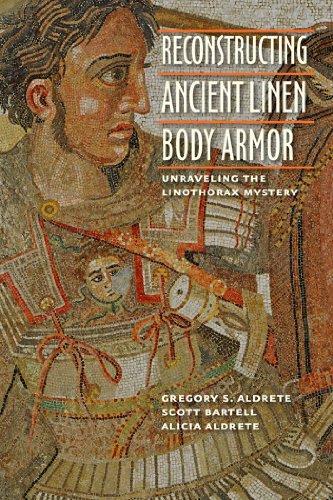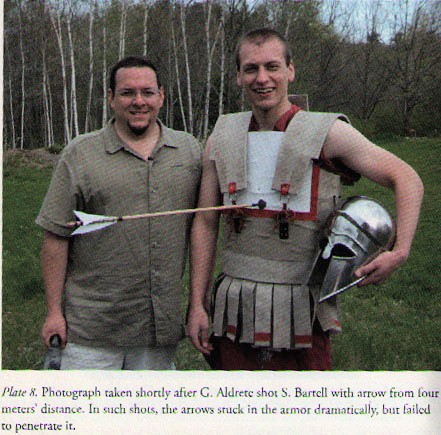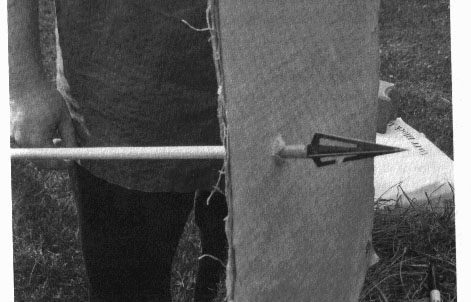
I don’t know about you, kind reader, but I have always imagined ancient Greek hoplites as being encased in bright bronze as they hammered away at each other. This book, Reconstructing Ancient Body Armor, by Gregory and Alicia Aldrete with Scott Bartell, convinced me that wasn’t invariably the case by any means. In fact, most of the time they were encased in nothing more than armor made of that most ancient of fabrics, linen.
How’s that possible? A fabric? And two millennia before DuPont de Nemours, Inc. and Kevlar?
Yup. Nothing but linen standing between their lives and their opponents’ knives, swords, spears and flights of arrows.
Of course this relative invulnerability required more than a single thin layer of linen. Several layers, as many as 15, with glue laminating them together; which still left the armor a third the weight of bronze, much more flexible, allowing the warrior to move quicker, while surprisingly nearly as impenetrable.
Don’t believe it? Neither did I until I read this well documented book. The writers first built the linen armor from scratch and then proceeded to hit it with every possible weapon it would have met more than 2000 years ago.
As I said, it is well documented. The writers, for example, rather exhaustively I thought, described every likely arrow type and the draw weight of the bow that they tested against the fabric. After which they calculated to the centimeter the resulting damage to the armor and the likely effect on the wearer. In one test they actually donned the armor themselves and allowed someone else to shoot arrows at them.
As a general rule you would not want to attempt this at home as you can imagine from the following image what would happen to the man’s ribcage with a modern steel tipped arrow!
In addition to their impressive systematic experiential approach to the real-world consequences of sharpened steel striking fabric, they acquainted us with the archeological and literary sources that suggested the existence of linen armor as no trace of such armor has ever been found. They accomplish this by quoting those relevant sources and providing many fine images of Greek warriors wearing it on various vases and stelae. There is also an extensive bibliography.
If ancient warfare is an interest of yours, this book is for you. Well written and super informative. Found at the Kindle Store.



